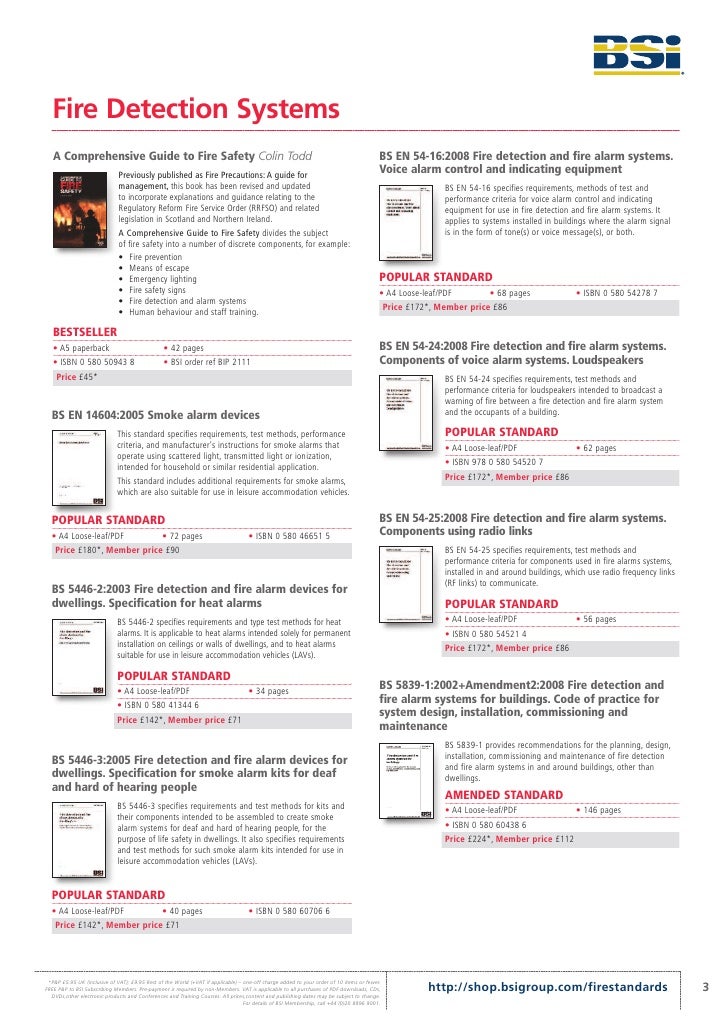
Dependant on the determined use at design stage, a category L1 to L5 with or without voice alarm should be installed. alert or evacuate signals).īuilding uses incorporating design for phased evacuation are often a fire engineered solution which will include the fire alarm specification. This enables two or more stages of alarm to be given within a particular area (e.g. However where the means of escape is based on phased evacuation, then a staged alarm system is appropriate.
#Bs 5839 part 1 2002 pdf converter manual#
Where the design of the means of escape is based on simultaneous evacuation of all occupants, then operation of a manual call point or fire detector should give an almost instantaneous warning from all the fire alarm sounders. Progressive horizontal evacuation, where occupants leave the compartment of fire origin to adjacent compartments leading to a storey exit. Phased, where some occupants evacuate parts of the building before others, or Simultaneous, where all occupants evacuate the building at the same time It is important to remember that the guidance in the annexes is in addition and supplementary to the guidance to Standard 2.1 to 2.15. The intention is to help designers and verifiers find the information they require quickly when designing or vetting such buildings. Special fire precautions are necessary within residential care buildings, hospitals and enclosed shopping centres and additional guidance is provided in the annexes.
#Bs 5839 part 1 2002 pdf converter how to#
Guidance on how to assess the risks and reduce false alarms is provided in BS 5839: Part 1: 2002.

This is normally attributed to poor, design, installation or maintenance of automatic fire detection and alarm systems. In more complex buildings, a sophisticated fire detection and fire alarm system may be needed.įalse alarms - around 97% of all automatic calls received by the fire and rescue service result in unnecessary attendance due to false alarms. where a shouted warning "FIRE" by the person discovering the fire may be all that is needed. Risk assessment fire warning - in small single storey non- residential buildings the means of raising the alarm could be quite simple, e.g. The benefit of early warning of a fire will increase the probability of the safe evacuation of the building and will assist owners and occupiers of buildings in formulating their fire safety policy and emergency fire action plan. There should also be a means so that anyone in the building who discovers a fire, can alert others to the existence of the fire and this should include arrangements for calling the fire and rescue service.



It is important that any outbreak of fire in premises is detected at an early stage in order that the occupants once alerted can commence evacuation of the premises as soon as possible.


 0 kommentar(er)
0 kommentar(er)
